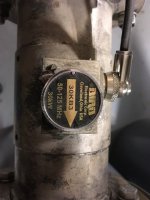BinaryMode
Active Member
To those that may know. I have a few questions about FM broadcast radio.
There is an FM broadcast station in my area called Retro 102.5. According to Wikipedia they transmit 17,000 watts. Why wouldn't they broadcast 100,000 watts to increase their market?
How many watts of electrical power does it require to power a transmitter of 100,000 watts? Is it 120 or 240 or more volts?
Do these radio towers have a propane driven backup generator?
Is there redundancy with the feed to the tower either via POTS, fiber or microwave? By that I mean if the tower is fed via microwave, is there also a fiber connection or POTS connection for backup?
Thanks.
There is an FM broadcast station in my area called Retro 102.5. According to Wikipedia they transmit 17,000 watts. Why wouldn't they broadcast 100,000 watts to increase their market?
How many watts of electrical power does it require to power a transmitter of 100,000 watts? Is it 120 or 240 or more volts?
Do these radio towers have a propane driven backup generator?
Is there redundancy with the feed to the tower either via POTS, fiber or microwave? By that I mean if the tower is fed via microwave, is there also a fiber connection or POTS connection for backup?
Thanks.





